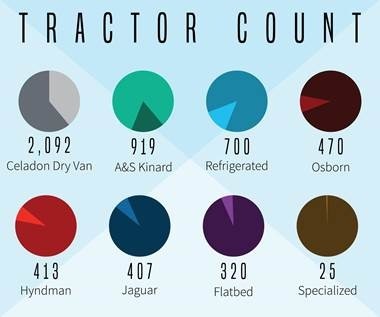CEMA UPDATES FOR SAVANNAH, GEORGIA SHARED BY BILL STANKIEWICZ 10-9-2016


Chatham County
PHASED RE-ENTRY GUIDELINES, as of 10-9-2016 Phase 3 will take effect at 5:00pm EST. Posted update from Bill Stankiewicz, Regional Vice President, A&S KINARD, Email: bstankiewicz@askinard.com, Phone: 1.404.750.3200
I. PURPOSE: The purpose of these guidelines is to establish consistent re-entry phase definitions and descriptions for those counties likely to be impacted from an Atlantic Hurricane, so local and state personnel with responsibility for emergency management, access control and public information will understand the differences between each phase and be able to better support local operations. Once agreed upon these defined re-entry phases will be included in the 2012 edition of the Georgia Hurricane Plan and will be immediately incorporated into the GEMA Disaster Critical Workforce Re-Entry Permits SOP, for use this hurricane season.
II. SCOPE: GEMA Officials and more importantly, Coastal County EMA Directors have defined and developed four phases of re-entry following a hurricane landfall in Georgia. It is further recognized that each of these phases may be sub-divided or have additional restrictions based on current conditions.
The Chatham County Command Policy Group will make the determination following a partial or full evacuation of the County, as to when conditions in the affected area(s) allow for citizens to return (re-enter). The affected area(s) may be limited in size; could include all Chatham County; or possibly extend into several counties in the region. When announced, a Progressive, three-phase plan will be initiated to ensure an orderly re-entry into the affected area(s) of Chatham County.
III. Re-entry "Phases" – Definitions:PHASE I-Render Safe Task Force Team Entry
ID Requirements: First Responders and other designated Emergency Response Personnel
re-entering during Phase I must be in possession of an official Local, State, or Federal Government/Department Photo ID Card.
Phase I Defined: This phase is the initial phase of re-entry in which teams from state and local response agencies as well as private sector utility providers will gain access to impacted areas. The primary objective of personnel operating in this condition is to render the area safe for follow on first responders conducting life safety operations.
Planning Assumptions for Phase I: In most situations members of the Render Safe Task Forces will be co-located immediately before re-entry operations begin in defined staging areas inland. These teams will be the first officials to enter restricted areas, therefore re-entry passes are not required as law enforcement officials restricting access will be imbedded in this response element or will not be posted to restrict access due to operating conditions. Nearly all elements of this group will likely be operating emergency response type vehicles with obvious agency or company markings.
Re-Entry into Chatham County during Phases I and IIA will be restricted to First Responders and other designated Emergency Response Personnel to include but not limited to:
• Law Enforcement
• Fire Services
• Search and Rescue Resources
• Emergency Medical Services
• Government Officials
DETERMINING ACCESS. Law Enforcement and other designated security personnel will exercise discretion at County Re-Entry Control Points. If personnel at the control point are not able to make an appropriate determination regarding access, the Emergency Operations Center will be contacted for resolution.
Being in possession of a Re-Entry Permit WILL NOTallow access into Chatham County prior to Re-Entry Phase IIB.
PHASE II-Emergency Response and Life Safety Critical Workforce
IIA - Critical Workforce Conducting Life Safety Operations
ID Requirements: First Responders and other designated Emergency Response Personnel
re-entering during Phase IIA must be in possession of an official Local, State, or Federal Government/Department Photo ID Card.
Phase IIA Defined: This phase will likely consist of personnel conducting life safety operations such as search and rescue, emergency medical services, fire suppression; hazardous materials control and containment, preliminary damage assessment, essential relief staff to critical medical facilities and immediate utility restoration to critical incident facilities.
Planning Assumptions for Phase IIA: Personnel entering during this phase that are responding in non-marked public safety or local utility vehicles should be expected to present employment credentials as well as a valid state issued identification card to public safety personnel controlling access. In limited situations, private sector personnel may be required to have State of Georgia Critical Workforce Re-Entry passes. These passes are issued to local private sector personnel through the Local Emergency Management Agency Director.
IIB - Essential infrastructure emergency support personnel
ID Requirements: First Responders and other designated Emergency Response and Support Personnel re-entering during Phase IIB must be in possession of an official Local, State, or Federal Government/Department Photo ID Card; OR Disaster Critical Workforce Re-Entry Permit.
Phase II B Defined: This phase should consist primarily of those individuals from the public and private sector that support the re-establishment of critical infrastructure to support the re-entry of the general public. These critical infrastructure systems include but are not limited to petroleum and food distributors, non-emergency medical facilities such as dialysis centers, pharmaceutical providers, members of the media, medical facility support staff and local government essential workers.
Planning Assumptions for Phase IIB: This phase will require close coordination between county emergency operations centers, as well as local public safety officials controlling access to ensure the appropriate individuals are allowed into damaged areas.
PHASE III-Local Residents, Property and Business Owners
ID Requirements: Local public safety officials will likely ask those attempting to gain access to show a valid state issued identification card as well as some type of document or proof that they have a reason or interest to enter the impacted area. Types of documentation to validate the need for entry for these individuals include but are not limited to driver’s license or state issued identification with an address in the impacted area, property deed, recent utility bill verifying address, current voter registration card, recent property tax statement, business credential or pay stub from local business.
Phase III Defined: This phase includes all residents, property owners and business owners.
Planning Assumptions for Phase III: This phase may come one week or more after phase I and may be the hardest to control for various reasons. Residents and individuals entering during this phase should expect to have their residency or affiliation with a local business challenged.
*Phase III may have specific restrictions in place such as:
Limited to portions of the impacted county
Restrictions allowing access only during day-light hours
PHASE IV-Open to Public with Limited AccessID Requirements: NO SPECIAL ID REQUIREMENTS
Phase IV Defined: This is the final phase of re-entry in which local officials may determine all or portions of their county are relatively safe for the general public to enter.
*Phase IV may likely have specific restrictions in place such as:
Limited to portions of the impacted county
Restrictions allowing access only during day-light hours

"""
Articles from Bill Stankiewicz
View blog
During an influenza pandemic, transmission of the pandemic virus can be anticipated in the workplace ...

This past week marked the 49th anniversary of the Occupational Safety and Health Act (OSHA), which s ...

OSHA's On-Site Consultation Program offers no-cost and confidential occupational safety and health s ...
You may be interested in these jobs
-
Registered Nurse,
Found in: Lensa US P 2 C2 - 6 days ago
University of Maryland Medical System Queenstown, United StatesCompany Description · At Shore Regional Health, you can learn, grow and make a lasting impact on patients and families. Youll experience the support of a collaborative work environment and a sense of collegiality unlike any other. Our comprehensive system has many locations and ...
-
Engineering - Multi-Disciplined
Found in: One Red Cent US C2 - 1 day ago
Spirit AeroSystems Tulsa, United StatesOverview · Spirit AeroSystems designs and builds aerostructures for both commercial and defense customers. With headquarters in Wichita, Kansas, Spirit operates sites in the U.S., U.K., France and Malaysia. The company's core products include fuselages, pylons, nacelles and wing ...
-

BOH Team Member>
Found in: Lensa US 4 C2 - 1 day ago
Tacos 4 Life Fayetteville, United StatesTacos 4 Life - JobID: [Food Service / Line Cook / Prep Cook] As a Back of House Team Member at Tacos 4 Life, you'll: Follow Tacos 4 Life standard operating procedures in the kitchen; Efficiently follow a daily prep cook list provided by management; Prepare and cook ingredients fo ...


Comments